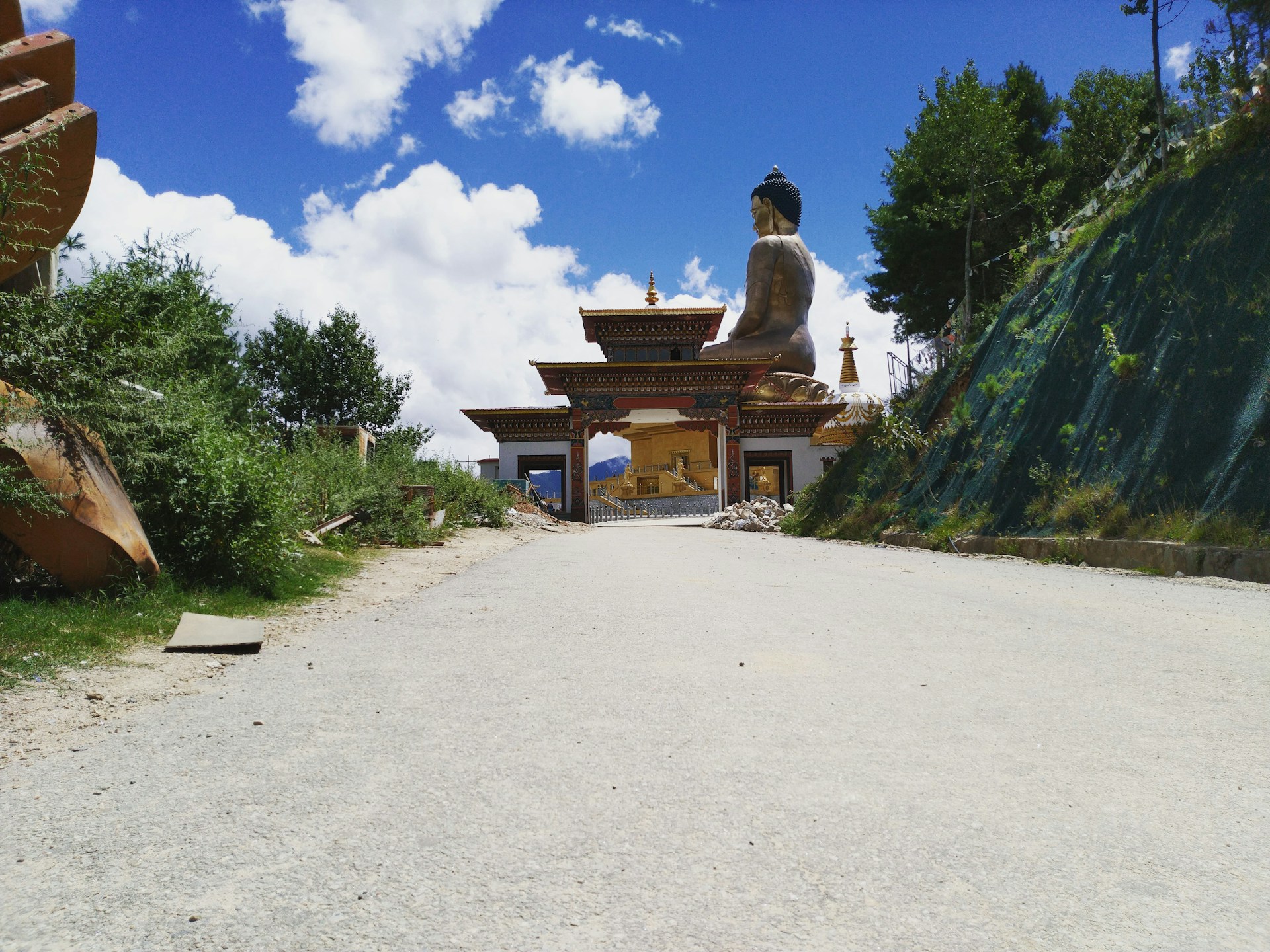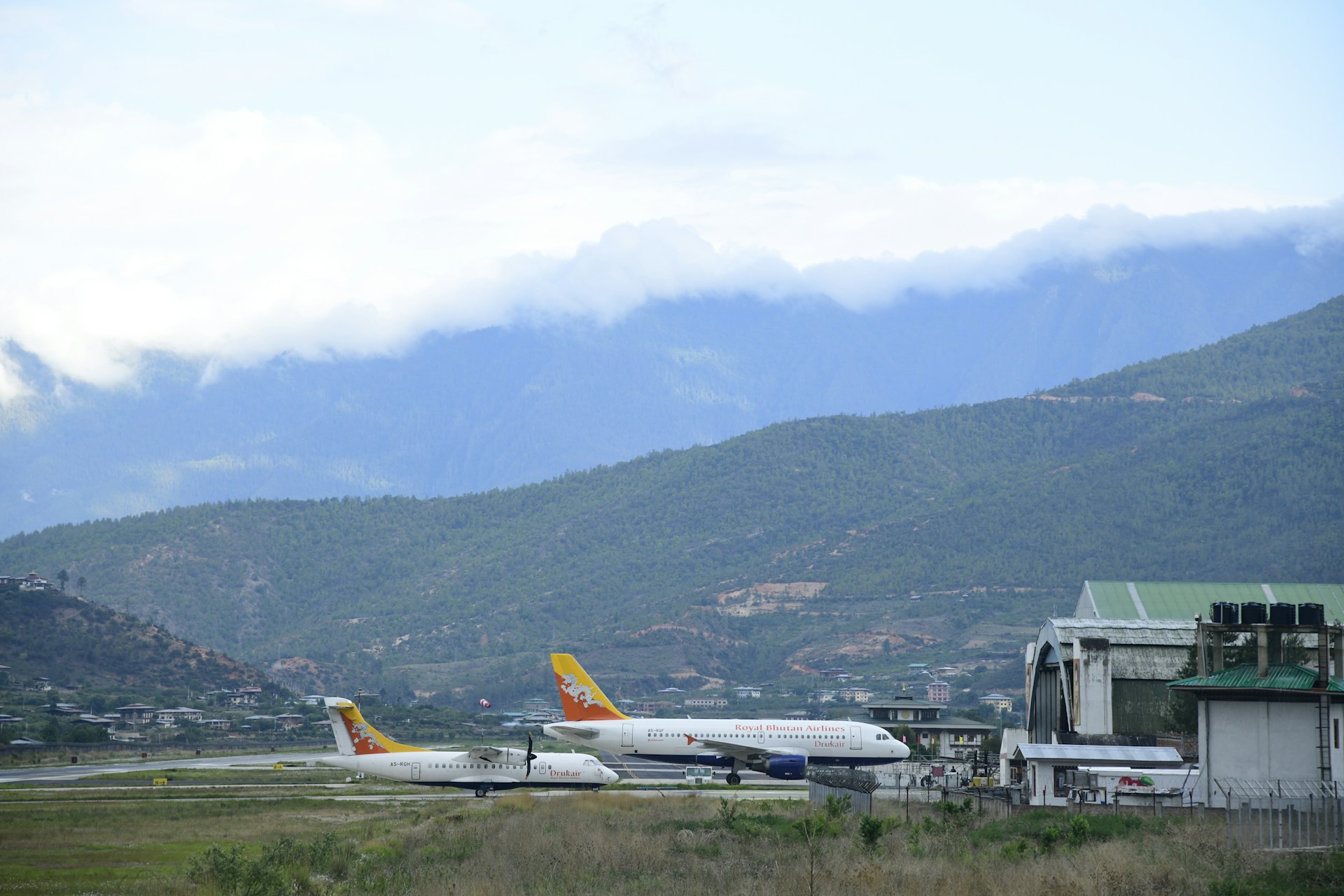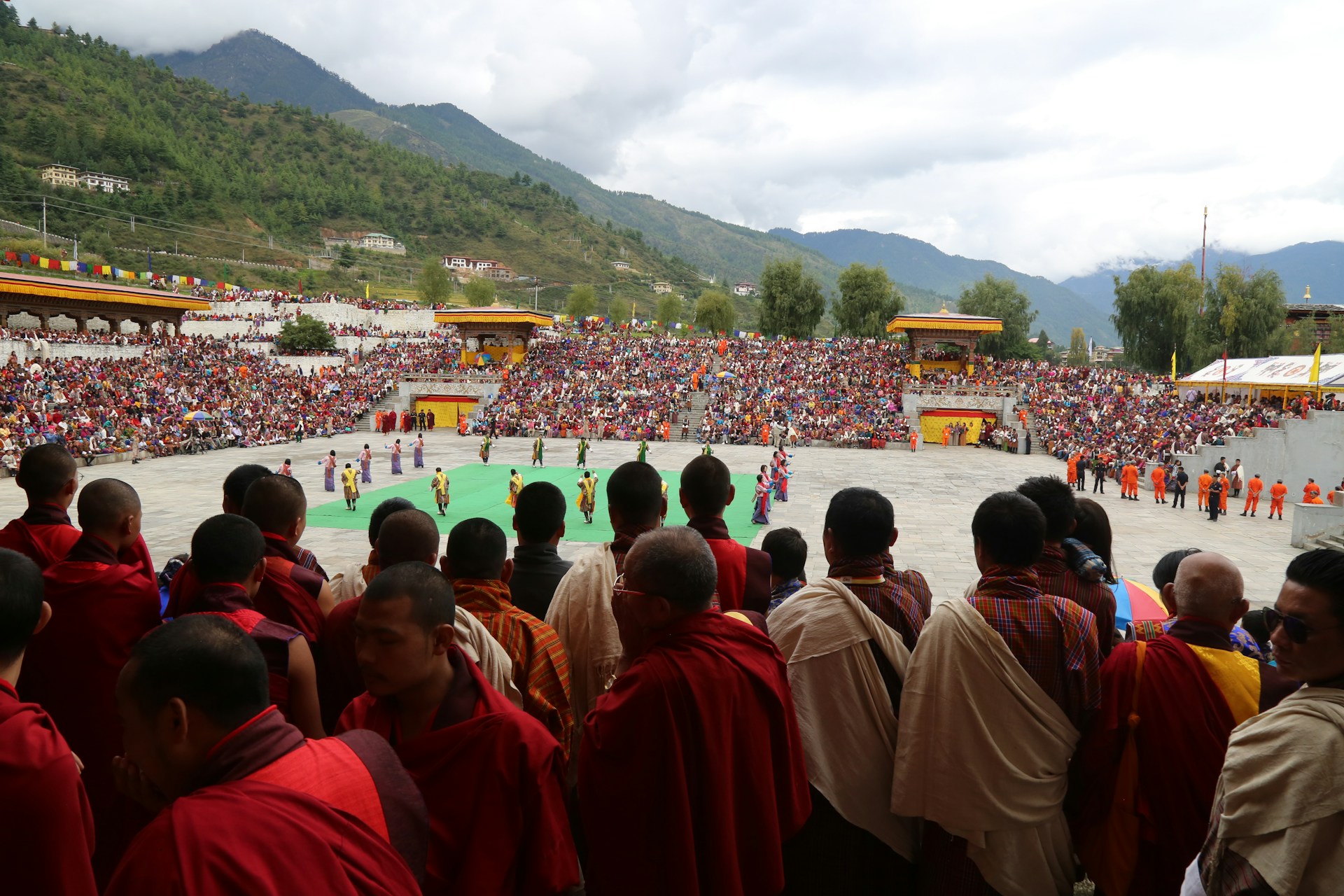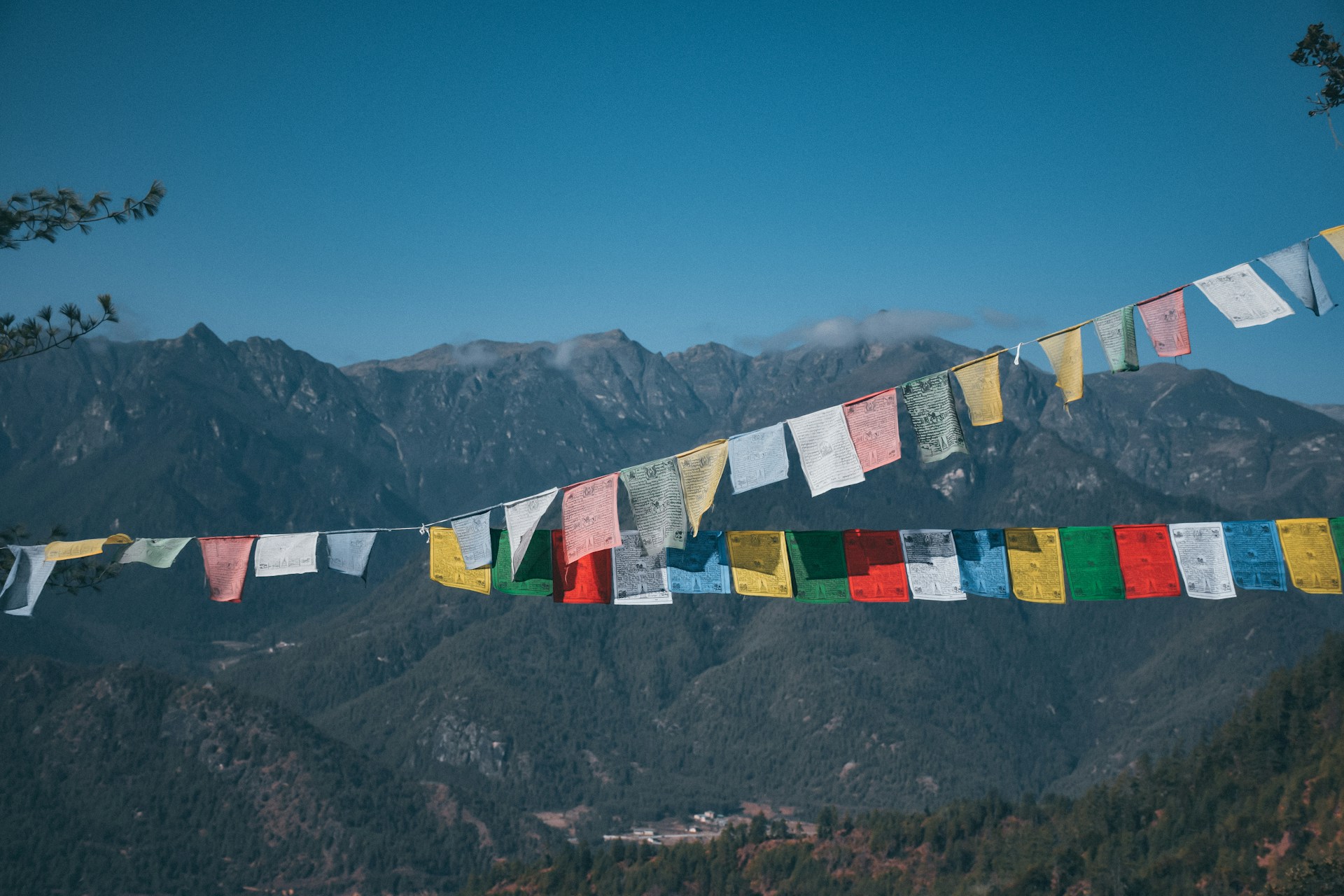FAQs About Bhutan Tours
Planning a trip to Bhutan often comes with many questions, especially given its unique travel policies and cultural richness. Our FAQs about Bhutan tours provide clear, concise answers to the most common inquiries from travelers. Whether you're curious about visa procedures, tour inclusions, trekking options, best times to visit, or cultural etiquette, these FAQs help you navigate every aspect of your journey. Bhutan’s tourism is thoughtfully regulated, so knowing what to expect before you arrive can greatly enhance your travel experience. From luxury and wellness retreats to cultural festivals and family trips, these FAQs are tailored to guide all types of travelers—solo adventurers, families, and groups alike. By understanding key details about Bhutan’s climate, safety, accommodation standards, and spiritual offerings, you can confidently plan a memorable, responsible, and enriching journey through the Kingdom of Happiness. Whether you're exploring Thimphu’s monasteries, hiking to Tiger’s Nest, or attending the vibrant Paro Tshechu, our FAQs ensure you're well-prepared and inspired.
Q1: Why should I choose Bhutan for my next travel destination?
Bhutan offers a rare blend of cultural richness, spiritual heritage, and natural beauty. With its focus on Gross National Happiness, pristine Himalayan landscapes, ancient monasteries, and eco-friendly tourism model, Bhutan provides a peaceful, transformative travel experience unlike anywhere else in the world.
Q2: What is included in a typical Bhutan tour package?
Most Bhutan tour packages include visa processing, accommodation, meals, transportation, a licensed guide, and entrance fees to cultural sites. Some packages also feature hiking, festivals, and wellness activities. Depending on the duration and category, luxury or budget options can be customized to suit your travel needs.
Q3: How long should I stay in Bhutan for a fulfilling tour?
A stay of 7 to 10 days is ideal to explore the cultural highlights of Paro, Thimphu, and Punakha, along with short hikes and spiritual experiences. Longer stays allow visits to central Bhutan (Bumthang) or trekking routes like Druk Path or Dagala Thousand Lakes.
Q4: Is Bhutan a suitable destination for solo travelers or families?
Yes! Bhutan is incredibly safe for solo travelers, couples, and families. The guided nature of tours ensures personalized attention. Families enjoy cultural festivals and nature excursions, while solo travelers benefit from tranquil surroundings and immersive experiences like meditation and village visits.
Q5: How do I book a Bhutan tour?
Bhutan tours must be booked through a licensed Bhutanese tour operator or an authorized travel agent abroad. They will arrange your visa, itinerary, and accommodations. Once your trip is confirmed, you'll receive a visa clearance letter to present upon arrival.

FAQs About Bhutan Treks
Q1: What are the most popular treks in Bhutan?
Top treks in Bhutan include the Druk Path Trek, Jomolhari Trek, Dagala Thousand Lakes Trek, Snowman Trek, and Laya Gasa Trek. These offer varying difficulty levels and highlight Bhutan’s pristine nature, high mountain passes, and sacred lakes.
Q2: Do I need a guide for trekking in Bhutan?
Yes, guided treks are mandatory in Bhutan. A licensed guide, cook, and support crew accompany all treks, ensuring safety, cultural interpretation, and proper waste management in line with Bhutan’s eco-tourism principles.
Q3: What is the best season for trekking in Bhutan?
The best time for trekking in Bhutan is Spring (March to May) and Autumn (September to November). These months offer clear mountain views, pleasant temperatures, and blooming alpine flora or colorful foliage.
Q4: What is the level of difficulty for Bhutan treks?
Bhutan offers treks for all levels. Short treks like the Druk Path are moderate and beginner-friendly, while long routes like the Snowman Trek are extremely challenging and suitable for experienced trekkers only.
Q5: What gear should I bring for trekking in Bhutan?
Pack sturdy trekking boots, layered clothing, a warm jacket, a rainproof outer shell, gloves, and a sleeping bag. While your trekking crew provides tents and meals, personal comfort and weather readiness are key.
FAQs of Bhutan Travel and Visa

Q1: Do I need a visa to travel to Bhutan?
Yes, all international travelers (except Indian, Bangladeshi, and Maldivian nationals) need a Bhutan visa, which is arranged through a licensed tour operator. A visa clearance letter is issued before arrival and the actual visa is stamped upon entry.
Q2: How do I apply for a Bhutan visa?
You don’t apply independently. Your Bhutanese tour operator handles visa processing after your tour is booked and paid. They submit your application to the Department of Immigration and provide a visa clearance that you present at the airport or border.
Q3: What documents are required for a Bhutan visa?
You’ll need a valid passport (with at least 6 months’ validity), a digital passport-size photo, and your confirmed travel itinerary booked through a licensed Bhutanese tour agency. Your tour operator will assist with all documentation.
Q4: What is the Sustainable Development Fee (SDF)?
Bhutan charges a daily SDF to support sustainable tourism. As of now, international tourists pay USD 100 per night. This fee contributes to education, healthcare, and environmental preservation in Bhutan.
Q5: Are there entry restrictions or permits for certain regions?
Yes, some remote or sensitive areas require special permits, such as restricted trekking zones. Your tour operator will handle these if your itinerary includes such areas. Most tourist routes like Paro, Thimphu, and Punakha don’t need extra permits.
Bhutan Festival Tours

Q1: What are the most famous festivals in Bhutan?
Bhutan’s most celebrated festivals include the Paro Tshechu, Thimphu Tshechu, Punakha Drubchen, and the Black-Necked Crane Festival. These vibrant events showcase traditional dances, colorful masks, music, and community rituals held in magnificent dzongs and temples.
Q2: When is the best time to visit for festivals?
The peak festival seasons are spring (March–April) and autumn (September–November). Major tshechus like Paro and Thimphu are held during these times and offer rich cultural insight, making them ideal periods for festival-focused Bhutan tours.
Q3: Do I need special tickets for festivals?
No special tickets are needed. Festival access is included in your Bhutan tour package, which covers entry fees, guides, and logistics. Your guide ensures respectful participation and shares the cultural significance of each ritual and performance.
Q4: Can I take photos during festivals?
Yes, photography is allowed in most public festival areas. However, flash photography, entering dance circles, or photographing certain sacred rituals may be restricted. Always follow your guide’s advice and respect local customs.
Q5: Are festivals crowded?
Yes, major festivals can be busy, especially in Paro and Thimphu. Book well in advance for accommodations. Smaller regional festivals offer more intimate experiences with fewer tourists and authentic local interactions.
Luxury Bhutan Tours
Q1: What defines a luxury tour in Bhutan?
Luxury Bhutan tours offer high-end accommodations, private guides, custom itineraries, and exclusive experiences like private monastery blessings, helicopter tours, or wellness retreats. These packages blend cultural immersion with top-tier service and comfort.
Q2: What are the top luxury hotels in Bhutan?
Bhutan is home to several world-class luxury resorts such as COMO Uma Paro, Six Senses Bhutan, Amankora, and Bhutan Spirit Sanctuary. These properties provide elegant rooms, spa services, fine dining, and panoramic views.
Q3: Can I customize a luxury tour itinerary?
Absolutely. Luxury Bhutan tours are fully customizable, allowing travelers to choose preferred destinations, experiences, and travel pace. Add-ons may include yoga retreats, private hikes, wellness sessions, or guided shopping for local crafts.
Q4: Is luxury travel in Bhutan eco-friendly?
Yes. Bhutan emphasizes sustainable luxury. Many high-end hotels practice eco-conscious construction, organic farming, and community engagement. Luxury travel here supports Bhutan’s vision of responsible tourism that benefits both environment and culture.
Q5: How much does a luxury tour in Bhutan cost?
Luxury Bhutan tours typically start at USD 500–1,000 per day per person, depending on hotel class and itinerary. These rates include the Sustainable Development Fee, all meals, private transportation, and premium services.
Budget Bhutan Tours
Budget Bhutan Tours provide an affordable yet enriching way to explore the Kingdom of Happiness without compromising on experience. These tours typically include 3-star accommodations, all meals, licensed guides, and transportation—ensuring comfort and cultural immersion at a lower cost. Travelers visit iconic sites like Tiger’s Nest, Thimphu Dzong, and Punakha while enjoying authentic local hospitality. Group tours, off-season travel, and shorter itineraries help reduce expenses. Despite being cost-effective, budget tours maintain Bhutan’s high tourism standards and offer meaningful insights into its spiritual heritage, natural beauty, and daily life, making it ideal for cultural explorers on a budget.
Q1: Is it possible to travel Bhutan on a budget?
Yes, Bhutan offers budget-friendly tour options, especially when traveling in groups. Choosing 3-star accommodations, shorter itineraries, and off-peak travel seasons can help reduce overall costs while still offering a rich cultural experience.
Q2: What’s included in a budget Bhutan tour?
A typical budget tour includes visa fees, accommodation in 3-star hotels, meals, transportation, and a licensed guide. You’ll still visit major attractions like Tiger’s Nest, dzongs, and monasteries, just with simpler service levels.
Q3: Can I backpack or travel independently in Bhutan?
No, independent backpacking is not allowed. All visitors (except Indian, Bangladeshi, and Maldivian nationals) must book through a licensed Bhutanese tour operator. Budget tours are arranged with fixed itineraries and shared group travel to lower costs.
Q4: How can I save money on a Bhutan tour?
Travel in a group, choose off-season dates, select 3-star hotels, and opt for a shorter itinerary. Avoid luxury add-ons, and travel with friends to split the cost of guides and transportation.
Q5: Is the experience still authentic on a budget tour?
Yes! Even budget tours offer deeply authentic experiences—visits to sacred sites, cultural immersion, and local cuisine. Bhutan’s hospitality, heritage, and nature are accessible to travelers of all budgets.
Bhutan Culture and Heritage
.jpg)
Q1: What makes Bhutan’s culture unique?
Bhutan’s culture is deeply rooted in Mahayana Buddhism, which influences everything from architecture and dress to festivals and daily rituals. The preservation of tradition alongside modern development makes Bhutan a rare, living cultural landscape.
Q2: What are dzongs, and why are they important?
Dzongs are majestic fortress-monasteries that serve as religious and administrative centers. They symbolize Bhutanese architecture and spirituality and are often the venues for major festivals and religious ceremonies.
Q3: How do Bhutanese people dress traditionally?
Bhutanese wear the gho (for men) and kira (for women)—traditional garments mandated in formal settings. These outfits reflect regional identity and cultural pride and are often colorful and handmade from woven fabrics.
Q4: What are some must-see cultural sites in Bhutan?
Key heritage sites include Tiger’s Nest Monastery, Punakha Dzong, Tashichho Dzong, and Kyichu Lhakhang. Each offers insight into Bhutan’s spiritual, historical, and architectural legacy.
Q5: Can I participate in local rituals or ceremonies?
Yes, with respect and guidance, visitors can observe and sometimes participate in temple rituals, receive monk blessings, or join village festivals, offering a profound connection to Bhutan’s living traditions.
BHUTAN FOOD & DINING
Bhutan Food & Dining offers a flavorful journey into the country’s rich cultural heritage. Bhutanese cuisine is known for its bold use of chilies, cheese, and local grains. The national dish, Ema Datshi (chilies and cheese), is a staple in nearly every meal. Dishes often include red rice, vegetable stews, and beef or pork curries, all seasoned with traditional herbs. Meals are typically served buffet-style in hotels, while farmhouse visits offer authentic home-cooked experiences. Vegetarian options are widely available. Bhutan’s dining reflects its values—simple, hearty, organic, and always welcoming.
Q1: What is traditional Bhutanese food like?
Bhutanese cuisine is flavorful, hearty, and often spicy. Staples include red rice, chili-based dishes, and cheese sauces. The national dish, Ema Datshi (chilies and cheese), is served in most meals, reflecting Bhutan’s love for bold flavors and simple ingredients.
Q2: Are vegetarian or vegan options available?
Yes, most restaurants and hotels provide vegetarian meals, often using organic, locally sourced vegetables. Vegan options may be limited but can be arranged in advance. Many dishes like kewa datshi (potato and cheese) and dal-bhat are naturally vegetarian.
Q3: What kind of dining is included in tour packages?
Standard tour packages include three daily meals, usually served at hotels, guesthouses, or selected restaurants. Meals are typically buffet-style, offering a mix of Bhutanese, Indian, and continental dishes. Luxury packages may include à la carte dining.
Q4: Is food in Bhutan spicy?
Yes, Bhutanese food is generally spicy, as chilies are considered a vegetable, not just a seasoning. However, milder versions are usually prepared for foreign guests, and spice levels can be adjusted upon request.
Q5: Can I try local food with a local family?
Yes, many tour operators arrange traditional farmhouse meals where travelers can enjoy authentic Bhutanese cuisine with a local family—an enriching way to experience the culture and hospitality of Bhutan firsthand.
Nature and Wildlife in Bhutan
Nature and Wildlife in Bhutan are remarkably preserved, thanks to the country’s strong conservation policies and spiritual reverence for nature. Over 70% of Bhutan is forested, creating rich habitats for rare species like the snow leopard, red panda, takin (national animal), and black-necked crane. Protected areas such as Jigme Dorji National Park and Phobjikha Valley offer opportunities for eco-tourism, birdwatching, and guided nature walks. Bhutan’s diverse landscapes—from alpine meadows to subtropical forests—are teeming with biodiversity. Visitors can explore pristine wilderness while supporting sustainable travel, making Bhutan a paradise for nature lovers and wildlife enthusiasts.
Q1: What kind of wildlife can I see in Bhutan?
Bhutan is home to rare and endangered species such as the red panda, takin, snow leopard, Himalayan black bear, and more. Birdwatchers can spot over 700 bird species, including satyr tragopans and black-necked cranes.
Q2: Which are the best national parks in Bhutan?
Top wildlife areas include Jigme Dorji National Park, Royal Manas National Park, and Phobjikha Valley. These protected regions offer opportunities for eco-tours, wildlife safaris, and birdwatching in pristine Himalayan habitats.
Q3: Are nature tours suitable for families and kids?
Yes, family-friendly nature tours are popular. Short hikes, birdwatching, and visits to wildlife sanctuaries provide educational and interactive experiences for children while enjoying Bhutan’s natural beauty.
Q4: When is the best time for nature and wildlife tours?
The best seasons are Spring (March–May) and Autumn (September–November). These months offer excellent weather, clear views, and peak wildlife activity, including the arrival of migratory birds like the black-necked crane.
Q5: Are eco-tours in Bhutan sustainable?
Yes, Bhutan strongly promotes sustainable and eco-friendly tourism. Nature tours are led by trained guides and designed to minimize impact on the environment while supporting local communities and conservation efforts.
FAQs of Bhutan Photography Tours

1. What makes Bhutan an exceptional destination for photography tours?
Bhutan offers breathtaking visual diversity—from snow-capped Himalayan peaks and lush valleys to ancient monasteries, fluttering prayer flags, and vibrant festivals. The country’s unique culture, traditional dress, spiritual architecture, and untouched natural beauty make it one of the most photogenic destinations in the world for both amateurs and professionals.
2. What are the best locations for photography in Bhutan?
Top photography spots include Tiger’s Nest Monastery, Punakha Dzong, Chele La Pass, Phobjikha Valley, Bumthang’s sacred sites, and bustling street scenes in Thimphu. Cultural festivals like the Paro and Thimphu Tshechu also offer vibrant photo opportunities featuring masked dances and traditional costumes.
3. Can I photograph people and monasteries freely in Bhutan?
While Bhutanese people are generally welcoming, it’s important to always ask for permission before photographing individuals. Photography inside monasteries and temples is often restricted or prohibited, especially during rituals. Your guide will inform you of rules and ensure you capture respectful and permitted images.
4. What equipment is recommended for photography tours in Bhutan?
Bring a DSLR or mirrorless camera, wide-angle and zoom lenses, a tripod, extra memory cards, batteries, and a rain cover. A drone requires special permission. Weather can change quickly in the Himalayas, so durable gear and lens cleaning kits are highly recommended.
5. Are there specialized photography tours available in Bhutan?
Yes, Bhutan offers guided photography tours led by professionals or local experts who understand light, culture, and hidden scenic spots. These tours focus on timing, angles, and festival access, and often include early-morning shoots, nature walks, and cultural immersion tailored for photographers.
Best Time to Visit in Bhutan
The best time to visit Bhutan is during spring (March to May) and autumn (September to November). Spring brings blooming rhododendrons, lush valleys, and mild temperatures—perfect for trekking and sightseeing. Autumn offers clear skies, crisp air, and stunning Himalayan views, ideal for cultural tours and photography. These seasons also host Bhutan’s grandest festivals, including the Paro and Thimphu Tshechu. Winter (December to February) is cold but peaceful, with fewer tourists and clear mountain views, especially in western Bhutan. Summer (June to August) is monsoon season—green and quiet but with occasional travel disruptions due to rain.
1. What are the best months to visit Bhutan for overall travel?
The best times to visit Bhutan are during Spring (March–May) and Autumn (September–November). These seasons offer clear skies, pleasant weather, blooming flowers, and vibrant festivals. They’re ideal for trekking, photography, sightseeing, and cultural events.
2. What is the weather like in spring and autumn?
In spring, temperatures are mild with blossoming rhododendrons and clear mountain views—perfect for nature lovers. Autumn brings crisp air, golden landscapes, and ideal conditions for high-altitude trekking and photography, especially with the post-monsoon visibility of the Himalayan peaks.
3. Can I visit Bhutan in the winter season?
Yes, winter (December–February) is peaceful and offers crystal-clear skies, fewer tourists, and opportunities for introspective travel or cultural experiences in western Bhutan. It’s cold in higher altitudes but manageable in valleys like Paro and Thimphu.
4. Is summer or monsoon season good for travel?
Summer (June–August) is monsoon season, bringing frequent rain and limited mountain visibility. However, this is a lush and green period, ideal for travelers focused on wellness retreats, cultural immersion, and visiting the less-traveled eastern Bhutan.
5. When are the major festivals held in Bhutan?
Major festivals like the Paro Tshechu and Thimphu Tshechu are held in spring and autumn, attracting large local and international audiences. These are perfect times to witness masked dances, traditional attire, and Bhutanese spiritual celebrations in full vibrancy.
